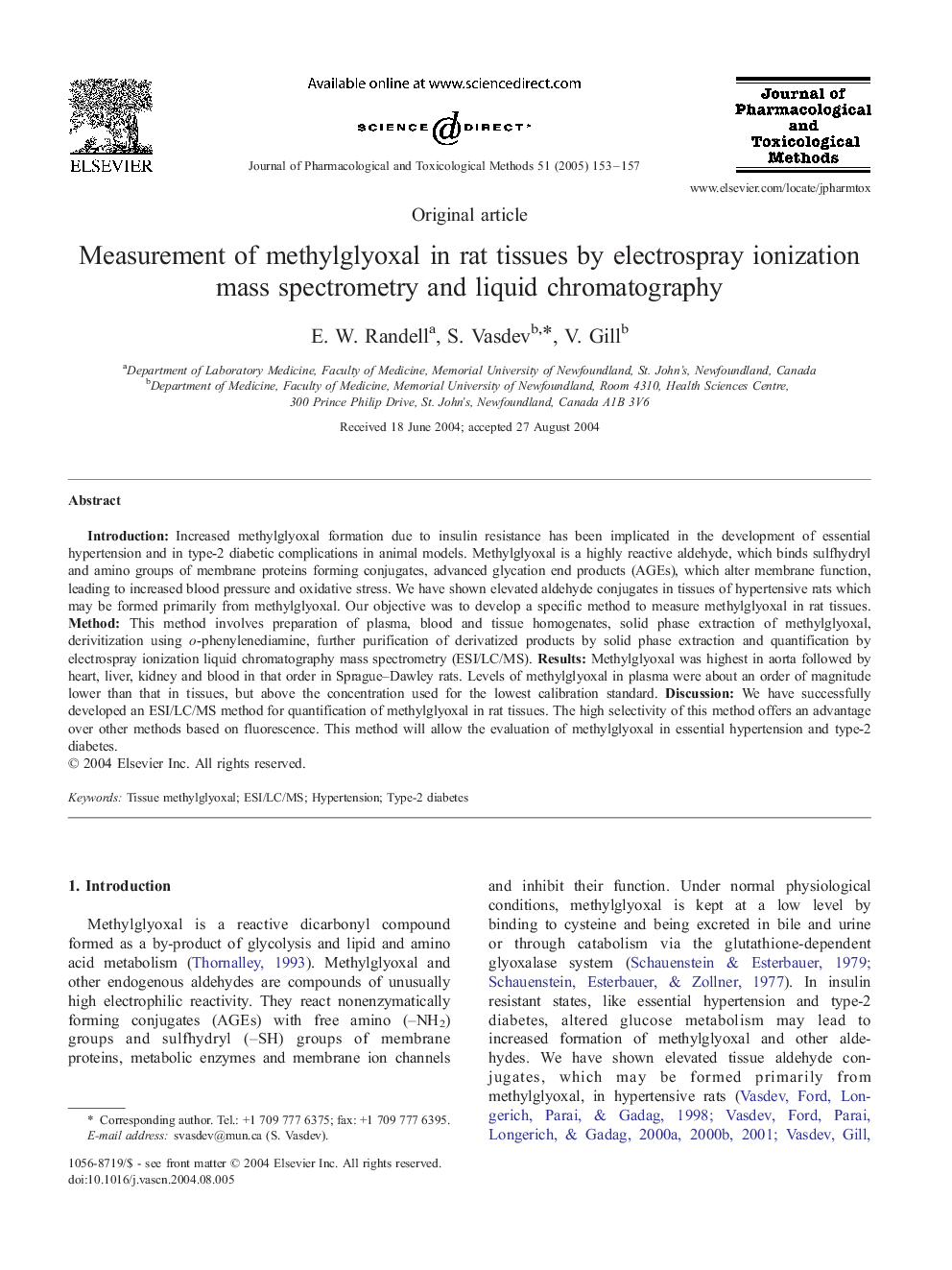| Article ID | Journal | Published Year | Pages | File Type |
|---|---|---|---|---|
| 9012280 | Journal of Pharmacological and Toxicological Methods | 2005 | 5 Pages |
Abstract
Introduction: Increased methylglyoxal formation due to insulin resistance has been implicated in the development of essential hypertension and in type-2 diabetic complications in animal models. Methylglyoxal is a highly reactive aldehyde, which binds sulfhydryl and amino groups of membrane proteins forming conjugates, advanced glycation end products (AGEs), which alter membrane function, leading to increased blood pressure and oxidative stress. We have shown elevated aldehyde conjugates in tissues of hypertensive rats which may be formed primarily from methylglyoxal. Our objective was to develop a specific method to measure methylglyoxal in rat tissues. Method: This method involves preparation of plasma, blood and tissue homogenates, solid phase extraction of methylglyoxal, derivitization using o-phenylenediamine, further purification of derivatized products by solid phase extraction and quantification by electrospray ionization liquid chromatography mass spectrometry (ESI/LC/MS). Results: Methylglyoxal was highest in aorta followed by heart, liver, kidney and blood in that order in Sprague-Dawley rats. Levels of methylglyoxal in plasma were about an order of magnitude lower than that in tissues, but above the concentration used for the lowest calibration standard. Discussion: We have successfully developed an ESI/LC/MS method for quantification of methylglyoxal in rat tissues. The high selectivity of this method offers an advantage over other methods based on fluorescence. This method will allow the evaluation of methylglyoxal in essential hypertension and type-2 diabetes.
Keywords
Related Topics
Health Sciences
Pharmacology, Toxicology and Pharmaceutical Science
Pharmacology
Authors
E.W. Randell, S. Vasdev, V. Gill,
